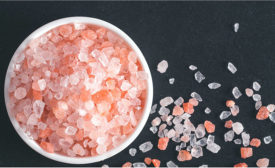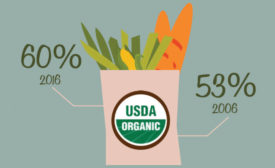Ingredients
Ingredients
Marinades, brines and seasonings: More than a flavor
Marinades, brines and seasonings continue to launch innovative flavors while sticking to the basics for clean labels.
Read More
Ingredients
The clean-label trend's impact on antioxidant and antimicrobial ingredients
Driven by cleaner labels: The clean-label trend has propelled the use of antioxidant ingredients and had an impact in the antimicrobial ingredient world as well.
Read More
Ingredients
Phosphates in meat and poultry: Incomparable functionality
Processors face serious challenges when attempting to produce products without the use of multifunctional phosphates.
Read More
Processing Tech | Ingredients
Batters & Breading: Attractive, yet polarizing
Consumers embrace chicken products with batters and breading, but other proteins suffer growing pains in the face of shoppers' health concerns.
Read More
Formulation Strategies
2017 Breakfast Trends: Wake-up call
Meat and poultry retailers and suppliers can expand breakfast activity by responding to strong shopper interest in health and convenience.
Read More
Ingredients
Gums, binders and emulsifiers: Cleaning up labels
Processors experiment with clean-label-friendly gums, binders and emulsifiers.
Read More
Stay ahead of the curve. Unlock a dose of cutting-edge insights.
Receive our premium content directly to your inbox.
SIGN-UP TODAYCopyright ©2024. All Rights Reserved BNP Media.
Design, CMS, Hosting & Web Development :: ePublishing












